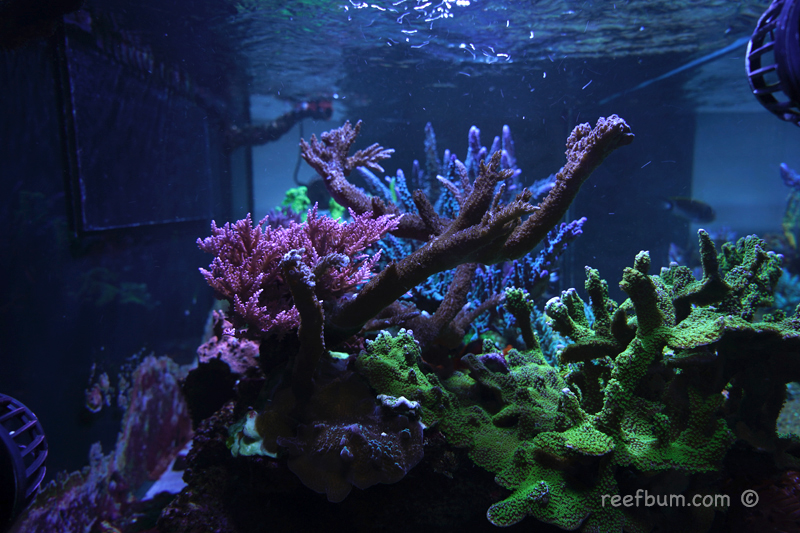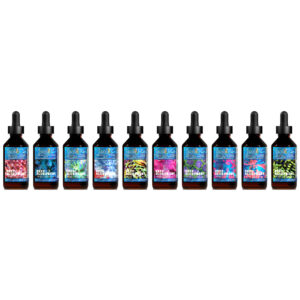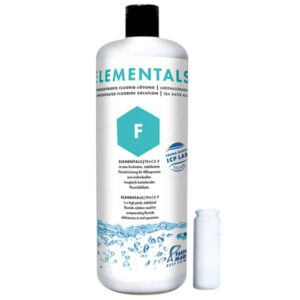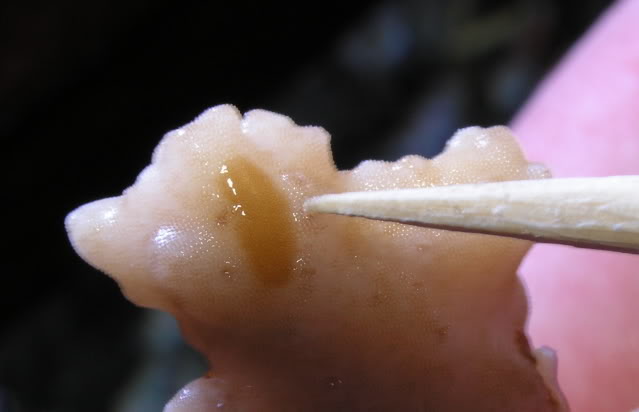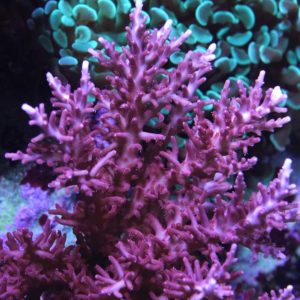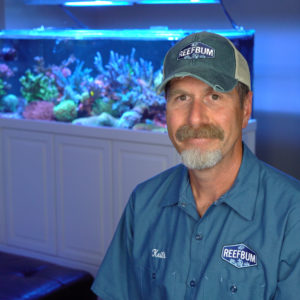Years ago when I started to keep reef tanks the only bacteria on my radar were nitrifying bacteria. The goal after cycling a tank was to have a healthy population of this good guy bacteria. Nitrifying bacteria provide biological filtration and are responsible for breaking down organic waste in a reef tank.
It was a pretty simple process to cycle a tank when live rock was readily available since the rock was already colonized with bacteria. All you had to do was add the rock to the tank and perform a few water changes. Along the way you test for ammonia, nitrite and nitrate to determine when the cycle is complete. No bottled bacteria was necessary.

Why Dose Other Bacteria Besides Nitrifying Bacteria?
Fast forward to today. Besides dosing nitrifying bacteria to jump start a reef, other bacteria are used such as Brightwell’s MicroBacter7. The bacteria in this additive is specially formulated to establish biological filtration in new aquariums. Why is this necessary? Most modern day reef tanks are started with dead dry rock and additional bacteria can speed along the cycling process.
But bacteria dosing these days is not limited to new reef tanks. Many reef keepers dose bacteria to established tanks. Some think it is necessary to replenish bacteria being removed by skimmers and filtration systems. Yes, equipment today is much more efficient than it was in the past but are enough bacteria being removed to impact the health of a reef tank and corals? Is there scientific proof to support this hypothesis?
Another reason often cited for dosing bacteria is to increase a tank\’s bio-diversity to fight off dinoflagellates. Anecdotal evidence suggests it does help but again is there any science to support this theory?
What about dosing bacteria to help with nutrient export to help control problematic algae? MicroBacter7 and Brightwell MicroBacter CLEAN are formulated to help digest uneaten food, detritus, and other organic material. The end result is a reduction in nitrates and phosphates. MicroBacter7 is supposed to help control red and brown algae like cyanobacteria while CLEAN targets green algae such as bryopsis.
My Bacteria Dosing Experiment
Earlier this year I had been fighting some cyanobacteria in my 187 gallon display as well as some nuisance green algae in my frag tanks connected to the display. My nitrates were approximately 2.5 ppm and phosphates were around .04. I kept nutrients at those levels by doing 10% weekly water changes, siphoning out detritus, skimming and using chaetomorpha in a refugium.

My main concern was the cyano, although it was not taking over the tank. Most of it was on the substrate and a few spots on the rock work. Occasionally I siphoned it out and used a power head to keep detritus from settling in the low flow areas where cyano was most prevalent.
I am not a fan of using chemicals to eliminate algae. Too risky in my opinion since beneficial bacteria can be impacted during treatment. I was open to other suggestions. A fellow reefer had good experiences using both MicroBacter7 and CLEAN to eradicate algae so I decided to experiment and dose both bacteria.
My 225 gallon peninsula tank was going to be included in the experiment as well since it had some bubble algae. I also wanted to see if I could lean on bacteria instead of chaeto to control nutrients. Chaeto in an algae reactor had been working well but it crashed a few times.

Results of My Experiment
Here are my observations after dosing bacteria to both tanks for six months:
- Chaeto in both systems eventually died. This was not a surprise since CLEAN is supposed to help combat green algae.
- Nitrates in the 187 gallon tank rose slightly from 2.5 – 5.0 ppm to 10 ppm. In the 225 gallon tank they climbed from 2.5 to 5 ppm.
- Phosphates did not change much in both tanks, with levels rising from approximately .05 ppm to .07 ppm.
- A large amount of the cyano in the 187 gallon tank is gone, but some green algae in the attached frag tanks remain.
- A little patch of cyano has developed in the 225 gallon tank in a low flow area.
- The bubble algae in the 225 gallon tank seems to be slowly dissipating.
In the future I may tweak the amount and frequency of the dosages to knock back even more algae. And I will continue to use natural means such as water changes and siphoning detritus to help keep nutrients in check.
Conclusions
Overall, I am very pleased with the experiment. First and foremost, I was able to reduce the cyano in the 187 gallon tank. Secondly, I am no longer running chaeto in either system, which is a plus on the maintenance front since it does take some work to maintain and keep chaeto alive. Fortunately, nutrients did not spike when I swapped out the chaeto for bacteria dosing.
As for the corals, they look great in both tanks. Corals in the wild apparently eat bacteria so does bacteria dosing aid coral health in a captive reef? I would like to see more research to help answer this question.
Additional Resources
If you would like some help with a new tank build, including help designing a custom aquarium, or help re-configuring your current setup then you can visit this page for more information. And if you are looking to add some equipment, I do sell GHL, Pax Bellum, Reef Octopus Calcium and Kalk Reactors and Royal Exclusiv products, including Dreamboxes, which is the equipment I use and recommend. I also sell Reef Brite metal halide and LED fixtures as well as Maxspect & IceCap Gyres.
As for additional insights and information, please explore my many other reef tank and SPS related articles as well as my YouTube channel. For an even deeper dive into reef tank care you can check out my Reef Keeping Master Class. This online course is an immersive and one of a kind educational tool designed to help reef aquarium hobbyists build and maintain a beautiful SPS reef tank. The course is a series of video presentations with some supplemental video from my YouTube channel. There are also quizzes to help students retain and understand the information presented in the course.
Need some frags…..I can help with that as well 🙂 Please visit my SPS Frag store to see what is available.

